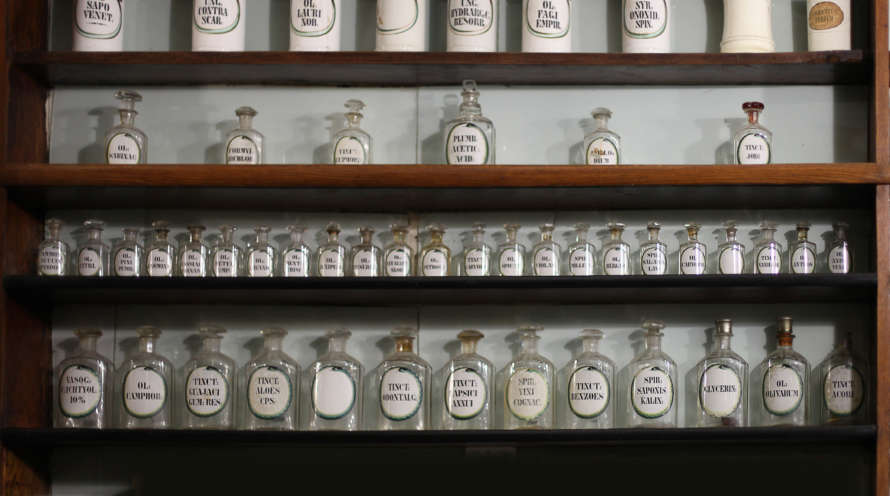Who, What, and How: The Legal Cannabis Industry
For decades the fight to legalize cannabis has focused on removing criminal and civil penalties associated with possessing and using the plant. Today, as increasing numbers of states buck the federal status quo and decriminalize and legalize the use of medical and recreational cannabis, challenges above and beyond simply striking laws from the books are presenting themselves.
How Marijuana Legalization Affects Logistics
We won’t delve too deeply into legalization in this article as there are numerous other resources that cover the topic in greater depth. But it is important to point out that “legalization” is little more than an umbrella term, and that umbrella covers a multitude of different circumstances.
In Washington, D.C., for example, it’s legal for those over 21 years of age to possess two ounces or less of marijuana. But it’s not legal to sell, and there are strict limitations on growing for personal use. In Denver, recreational cannabis can be sold, but only at licensed retail marijuana stores, for those 21 or older. California’s recreational cannabis laws are similar.
The takeaway here is that laws vary from state to state and even from city to city within states that have legal cannabis. So, as we explore the mechanics behind the legal distribution and sale of cannabis, bear in mind that none of the cases we discuss apply across the board. It’s possible, even probable, that in the future we’ll see cannabis production, distribution, and sale procedures become more consistent from region to region. For now, however, the industry is still figuring itself out.
Where Does Legal Marijuana Come From?
The simplest answer in most states is from your own (or a friend’s) back yard. Most states that have legalized cannabis possession and consumption have also (to some extent) legalized growing marijuana plants for personal use. As is largely the case with laws allowing cannabis use, however, there is a notable exception: the state of Washington.
But of course, just as we don’t all grow our own tomatoes or tend our own apple orchards, there are plenty of enthusiastic consumers of cannabis that aren’t ready or able to get down and dirty in the garden or grow room. And anyone who lives in a legal recreational state with dispensaries and retail stores and has seen these thriving businesses and their impressive array of products must wonder: Who’s growing all of this pot?
The short answer is licensed in-state growers. Growers typically need to apply for licenses, which themselves are dispensed in varying ways by different states. Licensing gives growers greater power in the regulated, legal, wholesale market in their region—though of course, there are still growers who prefer to color outside of the lines. In Mendocino County in California, only some 700 of thousands of growers have actually applied to legally sell marijuana wholesale.
That’s not to say that you need to worry about the cannabis flowers and other products for sale at your local licensed dispensary are coming from shady sources. California produces far more cannabis than it consumes. Growers that are attempting to circumvent the law usually have their eye on another market altogether: the East Coast, which is still playing catch-up when it comes to widespread recreational legalization. Selling to states where cannabis isn’t legal yet offers unlicensed growers a tempting profit margin.
That said, the profit to be made in growing legally is impressive itself. Because legal states generally prohibit the transfer of cannabis across state lines, legal dispensary sales are very well regulated. And, because recreational legal cannabis is a relatively new industry, getting in on the ground floor is one of the best business opportunities in the nation right now.
That’s doubly true for growers that can bring expertise and innovation to the industry. For example, in Washington, the idea that sun grown cannabis was impractical on a large scale has been deeply entrenched in the industry. That is, until wildlife biologist Jeremy Moburg of CannaSol Farms came along. Building on a foundation of his own scientific knowledge and the experience of sun-powered cannabis growers in the Netherlands, he set out to prove that a northerly latitude didn’t mean that potency was tied to grow lights.
In most states, licensing isn’t as simple as just filling out a few basic forms. Potential commercial growers need to have a business plan/ model in mind, a cultivation plan, and may even need to have agreements with dispensaries or other retailers to proceed. To succeed, a business plan should contain the following, according to Weatherport.com:
– Security and traceability
– Employee training and compliance standards
– Removal of waste products
– Transportation and logistics for retail, packaging, and processing
– Testing capabilities and protocols
– Accurate description of grow facility, operations planning, and production process (including equipment, soil, and fertilizers to be used)
Transporting Marijuana to Retail Outlets
All industries face unique challenges when it comes to supply chain and transportation logistics, and the fledgling recreational cannabis industry is no different in this respect.
In order to properly regulate the industry, it stands to reason that there needs to be a secure, documented paper trail in place, not only from the retail shelf to the eager hands of the customer, but from the licensed grower to the retail outlet. A well plotted distribution system accomplishes several things.
First, it helps protect consumers. You wouldn’t want to purchase black market meat or produce, ignorant of what chemicals and processes your food had been exposed to prior to consumption. Illegal growers aren’t held to the high standards of licensed growers when it comes to their methods and operations. Pesticides, potency, and other concerns simply can’t be controlled if pot appears on the shelf with no back trail.
Second, it protects licensed growers. The process of becoming a licensed legal cannabis cultivator isn’t trivial, and the standards to which these growers are held are high, for the consumer’s benefit. If those who are willing to go through this process and uphold these high standards can be undercut by black market growers, their incentives diminish rapidly.
The burgeoning marijuana industry doesn’t begin or end with cultivation or with dispensaries. In fact, as with any consumer product, the overall industry is composed of many different moving parts, and each hold massive potential for growth. Supply chain logistics are one part of the puzzle.
California is still facing bottlenecks in the cannabis supply chain, as cities and counties scramble to get licensing procedures for transportation approved and issued. Nationwide, the business sector as a whole is avidly watching the profit potential for secure transportation and security services—after all, you don’t have to live in a legal state to invest in the companies paving the way for better distribution.
Traditional transportation and security companies are starting to dip their toes into the pot pool, bringing with them decades of experience in logistics and safety, promising a bright future for smoother, safer, more secure supply pipelines very soon. Specialists are also cropping up, like California’s KanaFlow, which works to connect small licensed growers with retail outlets.
Retail Sales & Marijuana Dispensaries
The final link between seed and consumer, of course, is the legal dispensary. For many weed enthusiasts, opening their own dispensary would be living the dream. And that dream is becoming more and more possible as more states legalize recreational use and fine tune their licensing programs. However, it’s important to note that while running a cash register might be simpler than managing acres of farmland or running a fleet of secure transport vehicles, there’s a lot more that goes on behind the scenes at dispensaries than meets the eye!
Start-up costs alone can be daunting. While it might cost as little as $10,000 to open a small mainstream boutique, depending on your region, the license to open a dispensary alone can cost as much as $20,000 in some states—New Jersey, for example. In other states, like Louisiana, it can be as little as $150 to apply for a license. So before you start drawing up logos for your new shop, you’ll need to research your state’s policies.
Not only that, but retailers also need to prove that they have the start-up capital necessary to get their business off the ground. In Nevada, for example, you’ll need to document that you have at least $250,000 in liquid capital available just to get the paperwork to get started. Retail business owners also need to be prepared to hit the books and do plenty of networking in order to engage productively with transportation companies and growers.
These costs do represent a relatively high barrier to entry, but they’re not insurmountable, and as states work out the kinks in the system, they’ll probably lower over time. For those with the ability to jump in now, however, it may well be worthwhile to get a foot in the door early.
Other Cannabis-Powered Businesses
For those with a yen to break into the business, these aren’t the only three options, of course. While grow operations, transportation/distribution, and retail represent the foundation of the cannabis industry, there are plenty of other ways to become part of this profitable new industry ecosystem as well. Flower, of course, isn’t the only marijuana product consumers buy. Tinctures, extracts, wax, and a limitless variety of edibles are only the beginning.
And let’s not forget the industry once derided as paraphernalia. Accessories to enhance, aid, and facilitate consumption have been around since well before recreational legalization, and businesses have found a variety of ways to get around prohibition. Now that they don’t have to go through those machinations, producers and sellers of desktop and personal vaporizers, rolling papers designed for use with marijuana, and pipe and bong manufacturers are enjoying their own renaissance. Innovators in this sphere will find plenty of eager investors and producers as well.
Metropolitan Police Department (DC.gov) https://mpdc.dc.gov/marijuana
City of Denver (Colorado.gov) https://www.colorado.gov/pacific/marijuanainfodenver/residents-visitors
New York Times https://www.nytimes.com/2017/09/09/us/california-marijuana-growers.html
Weatherport.com http://weatherport.com/guide-to-starting-a-commercial-cannabis-grow-operation/
The Cannabist https://www.thecannabist.co/2018/01/07/california-legal-pot-test-supply-pipeline/96180/
SeekingAlpha https://seekingalpha.com/article/4081251-cannabis-security-logistics-companies-worth-watching
Please don’t take anything you read here as medical or legal advice. If you need medical or legal advice, consult a doctor or lawyer. The articles and content that appear on this website have been written by different people and do not necessarily reflect the views of our organization.


